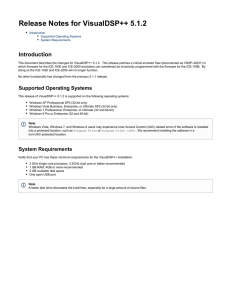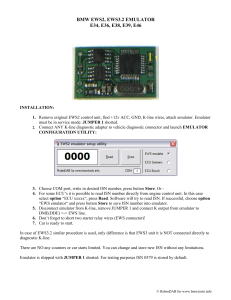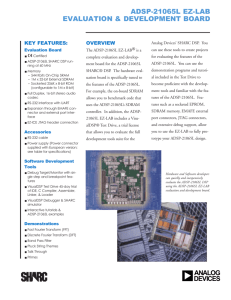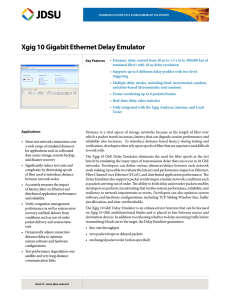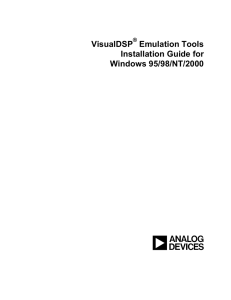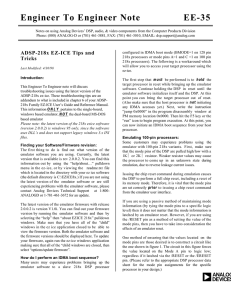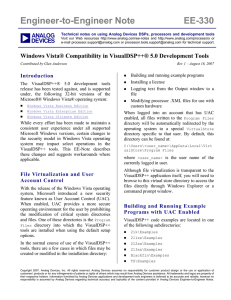VisualDSP++ 5.1.1 Release Notes
advertisement
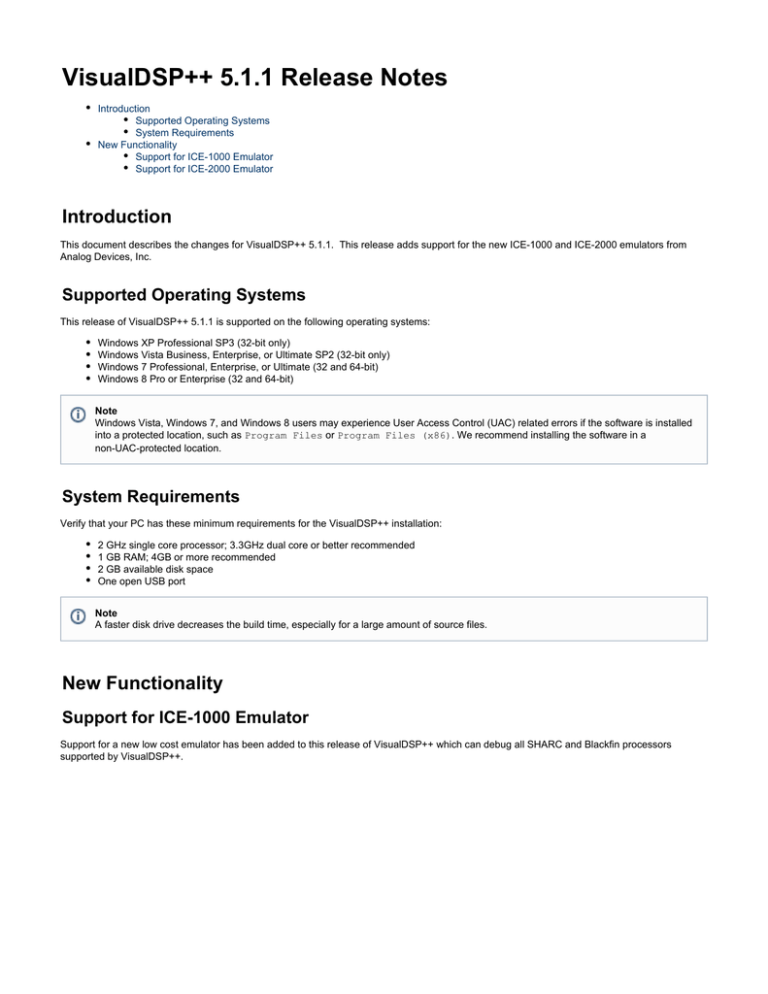
VisualDSP++ 5.1.1 Release Notes Introduction Supported Operating Systems System Requirements New Functionality Support for ICE-1000 Emulator Support for ICE-2000 Emulator Introduction This document describes the changes for VisualDSP++ 5.1.1. This release adds support for the new ICE-1000 and ICE-2000 emulators from Analog Devices, Inc. Supported Operating Systems This release of VisualDSP++ 5.1.1 is supported on the following operating systems: Windows XP Professional SP3 (32-bit only) Windows Vista Business, Enterprise, or Ultimate SP2 (32-bit only) Windows 7 Professional, Enterprise, or Ultimate (32 and 64-bit) Windows 8 Pro or Enterprise (32 and 64-bit) Note Windows Vista, Windows 7, and Windows 8 users may experience User Access Control (UAC) related errors if the software is installed into a protected location, such as Program Files or Program Files (x86). We recommend installing the software in a non-UAC-protected location. System Requirements Verify that your PC has these minimum requirements for the VisualDSP++ installation: 2 GHz single core processor; 3.3GHz dual core or better recommended 1 GB RAM; 4GB or more recommended 2 GB available disk space One open USB port Note A faster disk drive decreases the build time, especially for a large amount of source files. New Functionality Support for ICE-1000 Emulator Support for a new low cost emulator has been added to this release of VisualDSP++ which can debug all SHARC and Blackfin processors supported by VisualDSP++. Support for ICE-2000 Emulator Support for a new emulator has been added to this release of VisualDSP++ which can debug all SHARC and Blackfin processors supported by VisualDSP++. The ICE-2000 operating frequency can be 1MHz, 5MHz, 9MHz, 15MHz, 23MHz, or 46MHz but defaults to 9MHz. In order to successfully run at a certain emulator operating frequency it is recommended that the core clock of the processor being debugged is running at 2X the emulator operating frequency. So if the emulator operating frequency is 9MHz, it is recommended that the core clock be at least 18MHz. Other variations on the target board can also affect the emulator operating frequency.
